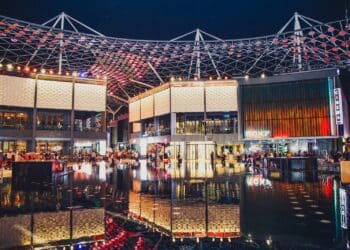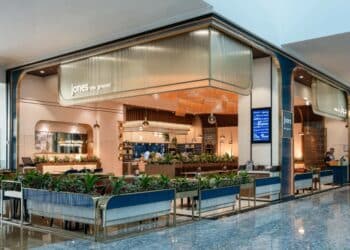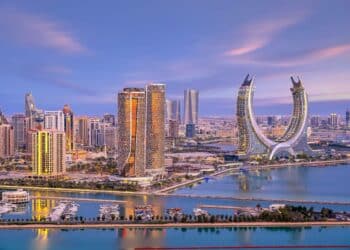The director of international development for Guide Michelin shares his insights exclusively with Catering News ahead of his appearance at the Global Restaurant Investment Forum (GRIF), being held from April 10-12 at Fairmont The Palm, Dubai.

Gwendal Poullennec, director of international development for Guide Michelin, has worked for the world-famous restaurant guide since 2003. Poullennec is currently in charge of operations and business development for the Michelin Guide, most recently expanding the brand to Asia with its launch in Hong Kong, Osaka, Kyoto, Tokyo and Singapore. As such, Poullennec is respected industry-wide as an expert on creating a food culture and developing culinary destinations.
How can a food culture create business and contribute to local tourism?
Food is now regarded as one of the leading attractions in travel and tourism. Today’s tourist is searching for new experiences and willing to discover the local culinary culture when he or she goes on holiday. An exciting food culture is a key asset for the promotion of a destination, increasing tourism revenue and developing destination loyalty. Studies clearly show that memorable dining experiences have a decisive impact, turning a visitor into a promoter of the destination.
If a city or country doesn’t have a long history of food, how should owners, operators and tourism boards come together to help build a food culture?
The last 20 years have seen a continuous increase in the quality of the culinary offerings in most of the world’s tourism destinations. In some cases, (Nordic countries are a good example) the tourism authorities have played a crucial role in promoting and sometimes even encouraging the local food culture. Successful policies involve in-depth work on improving the quality of local products, the consistency of sourcing and the training of chefs. It is also important to communicate with the local population regarding evolutions in the local dining scene.
Can you give any good examples of such places that have achieved success in building a food destination?
There are many examples of countries successfully promoting their culinary culture abroad, to name just a few: Singapore, Korea, Japan, Hong Kong, Denmark, Italy, France. The Michelin Guide has played in important part in all these regions by shining an international spotlight on local cuisine.
Which new regions are standing out in the restaurant scene?
Singapore has successfully promoted its street food scene and Denmark has established its reputation for creative gastronomy. The case of Singapore is particularly interesting because of the street food culture known as hawker centres. Last July, with the release of the first edition of the Michelin Guide to Singapore, two modest food stalls in Singapore made the headlines by becoming the first street vendors to be rewarded by the Guide. In recent years, new Nordic cuisine has set a benchmark with its innovative approach to traditional foods combined with a strong focus on health and ethical production. Today, Scandinavian-style restaurants are blossoming all over the place with very interesting food techniques.
The UAE’s restaurant industry is developing at a rapid pace – what most interests you about the food culture in UAE?
The UAE’s growing restaurant industry also provides an interesting case to watch carefully. The UAE food culture is very exciting because we are witnessing its birth. Many different types of cuisine, whether Middle Eastern, Asian, European, or South American, are vying to make a name for themselves and be recognised as serious additions to the UAE’s culinary landscape. Its geographical situation in the Middle East mean’s the UAE is home to a melting pot of different influences, from which something new might emerge.
Now in its fourth year, GRIF is an annual networking and intelligence event for the international restaurant and hospitality community, powered by Michelin and based in Dubai. GRIF 2017 will provide a macroeconomic overview of the F&B industry and tackle issues such as concept development, finance and lending, investment feasibility, scaling up for sustainable growth, creating a food culture and catering to the digitally-focused customer. For more information, visit www.restaurant-invest.com


































































